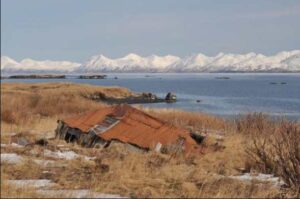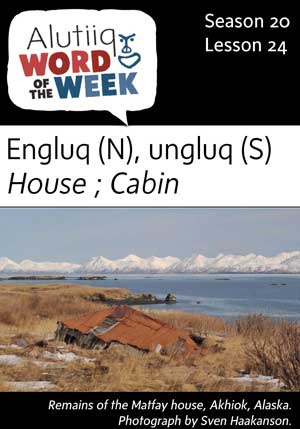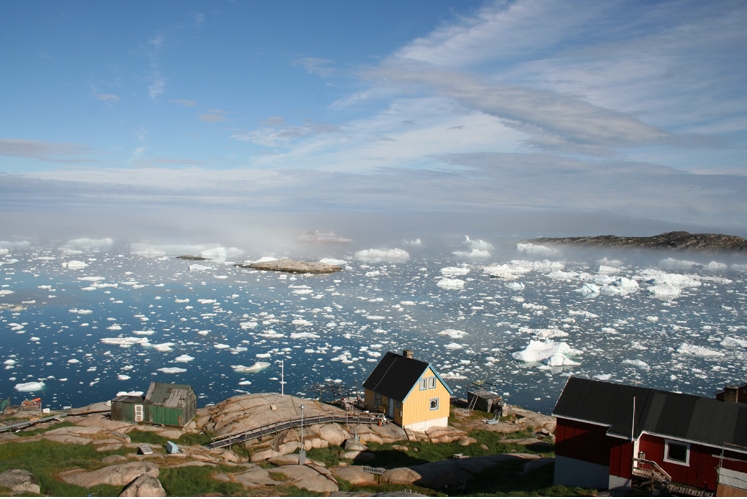House, Cabin — Engluq (N), Ungluq (S)
Nutaamek engluliyut. – They are building a new house.

When Alutiiq people travel outside Alaska or meet visitors from distant places, they are often asked about igloos. “Do you live in an igloo? Do you know anyone who does?” This tired stereotype traces its origins to twentieth-century portrayals of northern people by the media. Movies about the Inuit of the high Arctic taught Americans that northern indigenous people lived in snow houses, or igloos, obscuring the diversity of arctic cultures and housing types.
Although the word igloo comes from the Inuit word for house, it can refer to a variety of structures: a permanent wood and sod house or a temporary shelter made of snow. Although Alutiiq people never used snow houses, the Alutiiq word for house, ungluq, is similar to igloo. This reflects the deep linguistic ties between coastal societies of the far north.
For at least five thousand years, the traditional Alutiiq house was a wood-framed structure covered with warm, weatherproof sod. Alutiiq families lived in these structures into the early decades of the twentieth century when log cabins and milled lumber houses became the norm. A photograph taken in Old Harbor in the 1890s shows a western-style log structure among a community of sod houses. Elders recall that such structures gradually replaced sod houses, which were transformed into steam baths, cooking houses, and places where men gathered to gamble.
Sava Matfay, the father of the late Larry Matfay, built the first wood-framed house in Akhiok. Sava traded a fur buyer a single sea otter pelt for a load of red cedar planks. The fur buyer shipped the lumber to Akhiok and then helped the Matfays build a home.
Listen to podcast at Alutiiq Museum website
[content id=”79272″]








